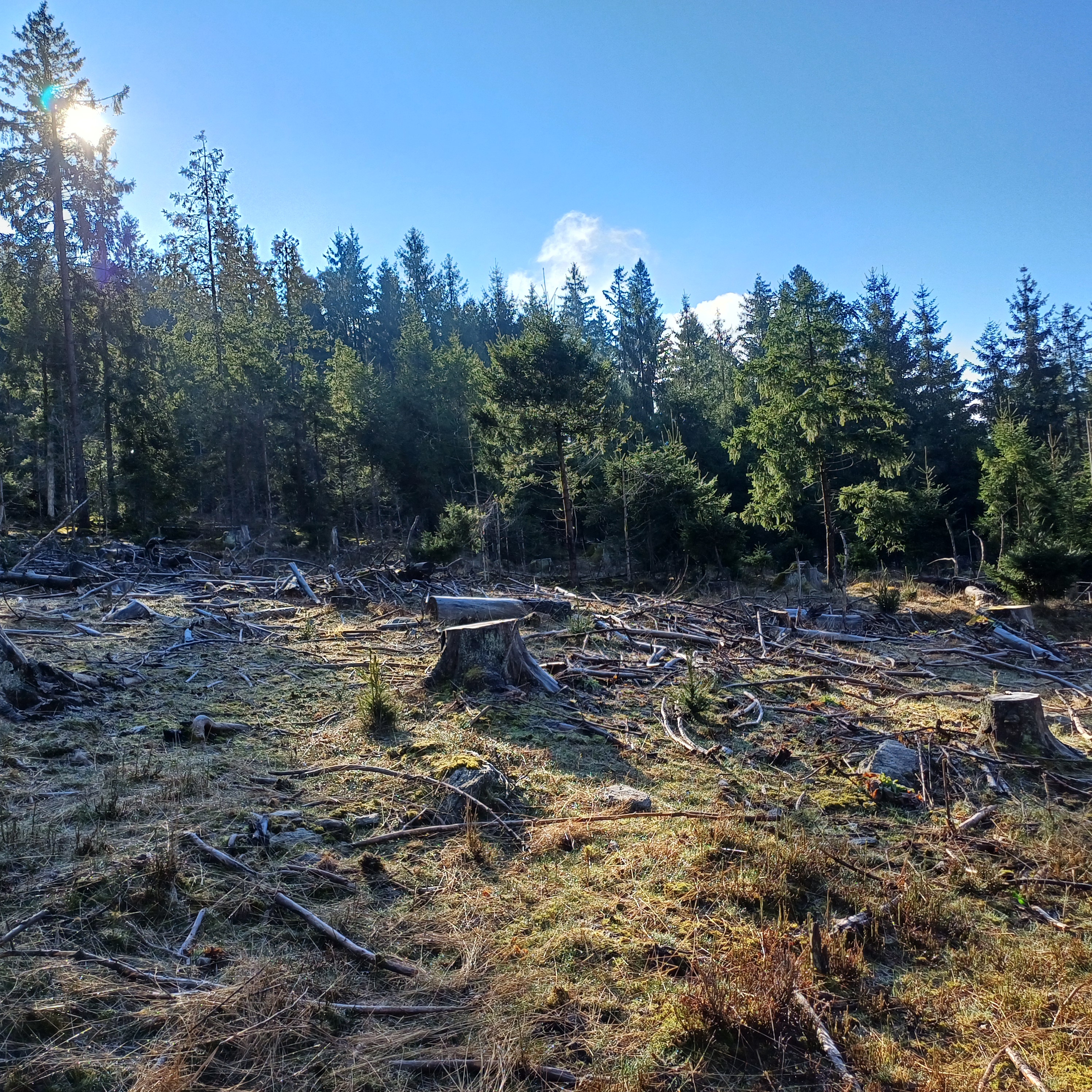T-EDGE

Europe’s forests are undergoing rapid transformation. Climate change and unprecedented levels of disturbance are opening up forest canopies and creating new forest edges. Unlike permanent edges, such as those between forests and agricultural land, these transient edges emerge temporarily along disturbance patches and gradually disappear as forests regenerate. Although they are temporary, transient edges can have a lasting impact on forest ecosystems. They alter local biophysical conditions and forest regeneration, affecting areas both at the edges and further into the forest interior.
The project T-EDGE addresses a major knowledge gap: How do transient edges affect forest biophysical conditions and regeneration dynamics?
Assessing the impacts of transient forest edges on biophysical conditions and regeneration in the forest interior (T-EDGE)
Project Goals
Our research aims to:
- Characterize the biophysical changes at transient forest edges, including shifts in canopy structure and microclimate towards the forest interior.
- Understand how these changes influence forest regeneration, particularly the abundance and species composition of tree seedlings and saplings.
- Assess the long-term implications of increasing forest disturbances for forest recovery, biodiversity, and climate adaptation.
Methodology
We combine field-based surveys with remote sensing technologies to study transient edges at multiple scales:
- Local scale: Detailed surveys of forest structure, light, and temperature, as well as forest regeneration from the edge to the interior of the forest, provide an understanding of the mechanistic processes involved.
- National scale: Analysis of disturbance patterns and regeneration trends across Germany using Earth observation and National Forest Inventory data allows broader ecological trends to be uncovered.
Research Team
The Earth Observation for Ecosystem Management (EOEM) group at the Technical University of Munich (TUM) has expertise in the areas of forest dynamics, climate impacts, disturbances and remote sensing. Within T-EDGE, members of the EOEM group study the biophysical conditions at transient edges.
Contact: tbd (PhD Researcher) and Katja Kowalski (PI)
The Ecosystem Analysis and Simulation (EASI) lab at the University of Bayreuth (UBT) has expertise in analysing and modelling forest dynamics, climate change impacts, biodiversity and model-data integration. EASI lab members focus on the effects of transient edges on forest regeneration.
Contact: Leonie Gass (PhD researcher) and Lisa Hülsmann (PI)
Funding
This project is supported by DFG – German Research Foundation.

